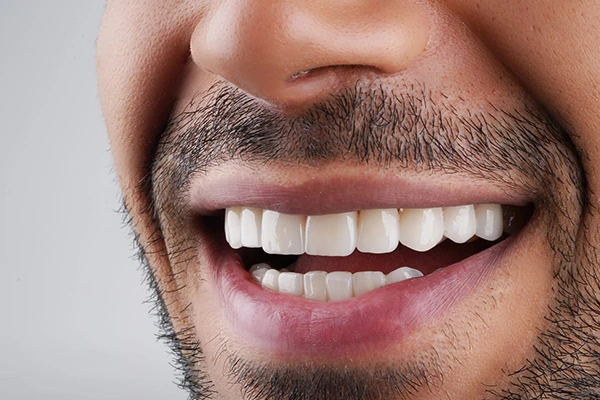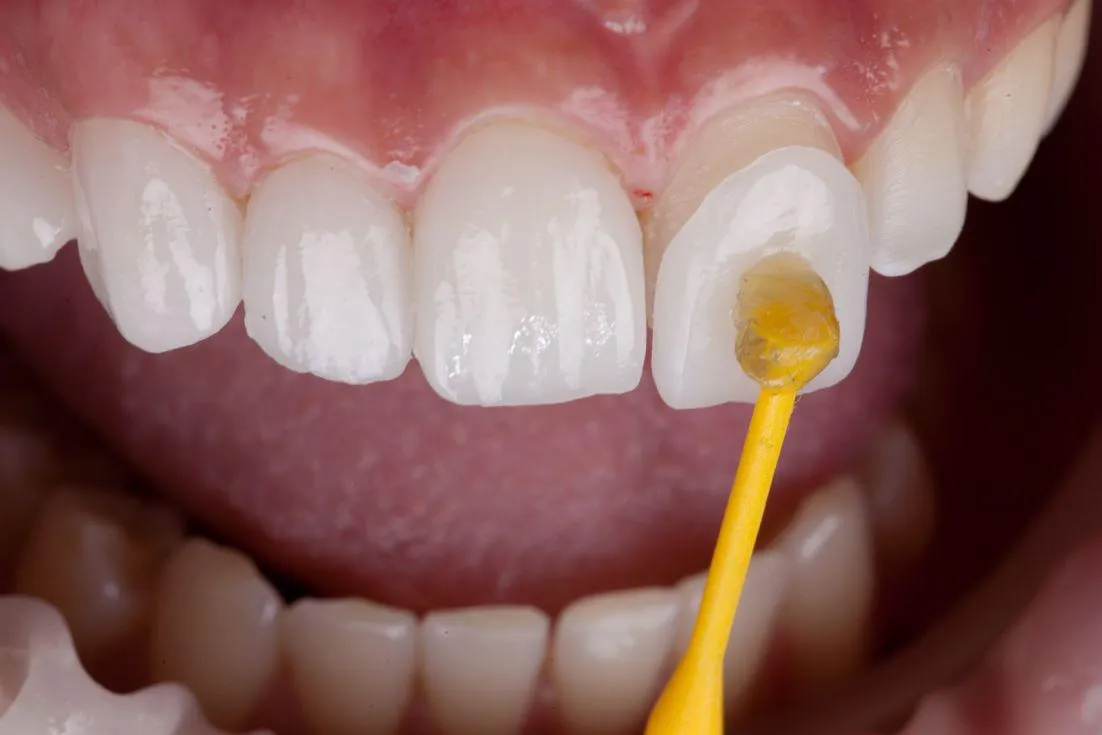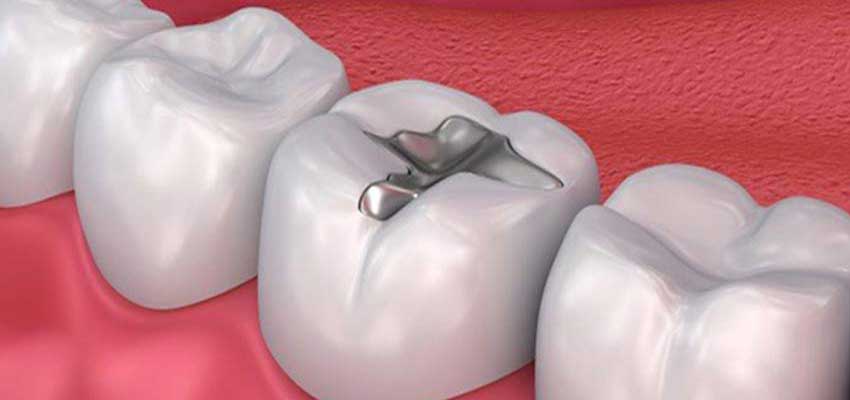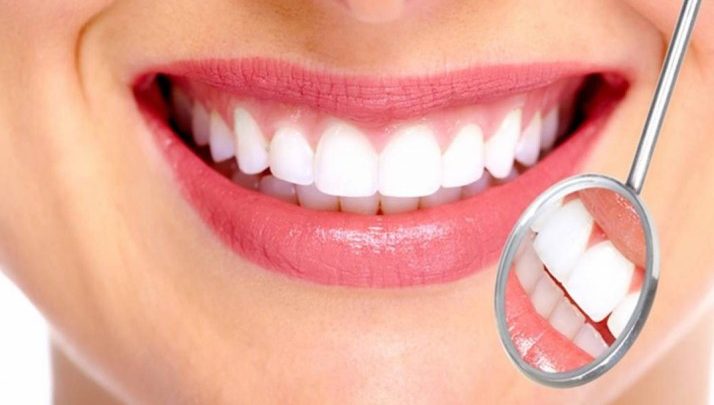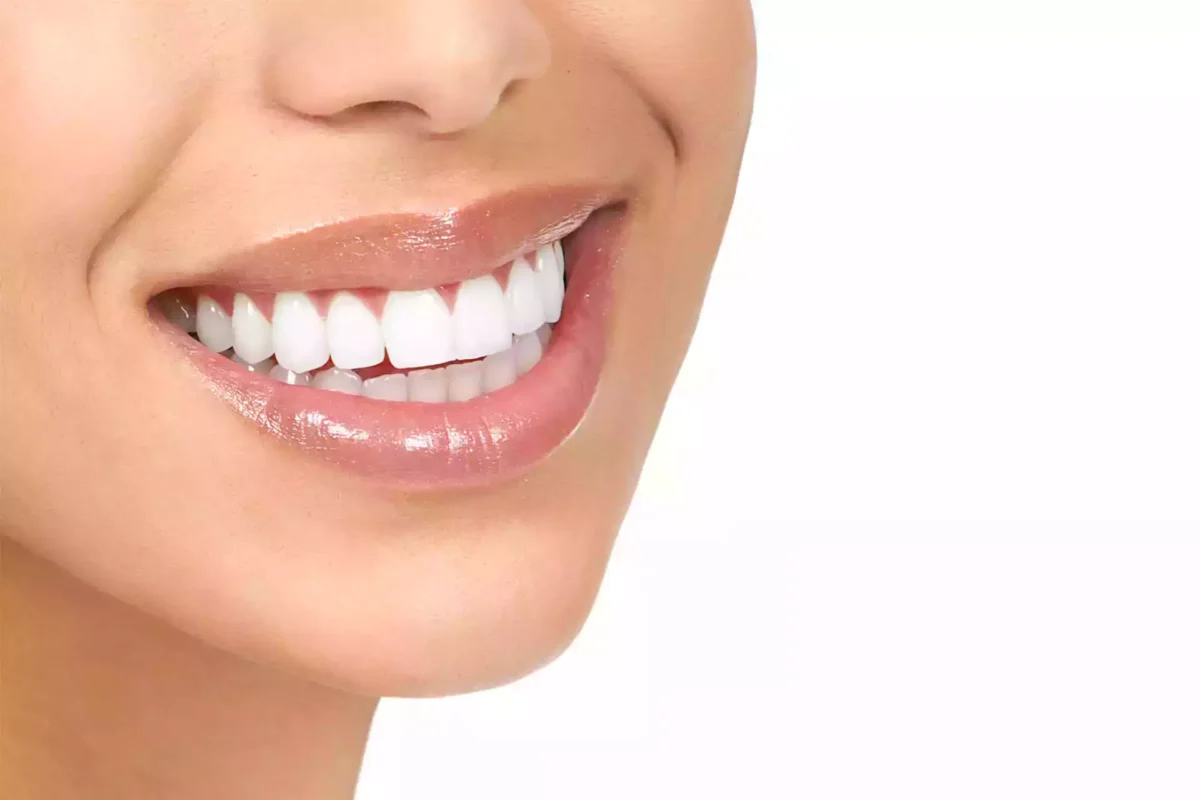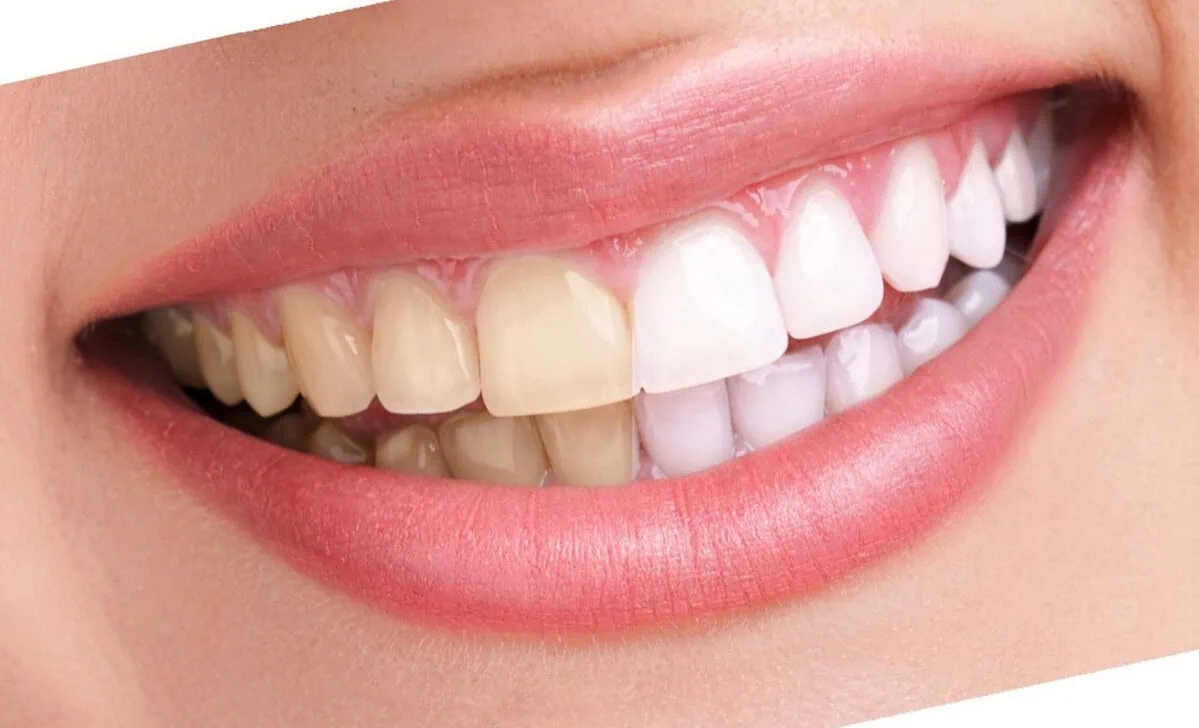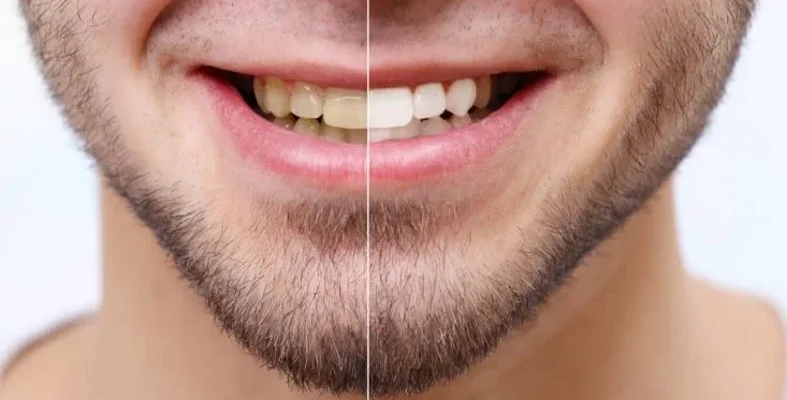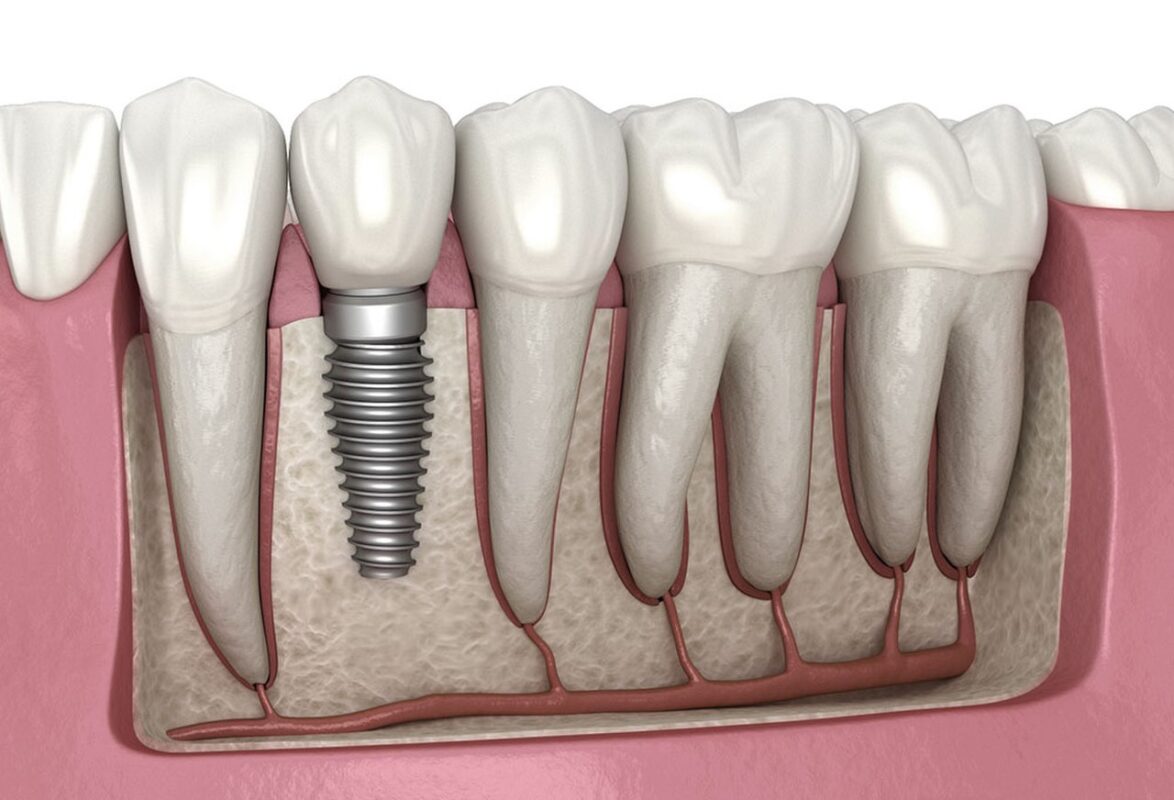Teeth Whitening
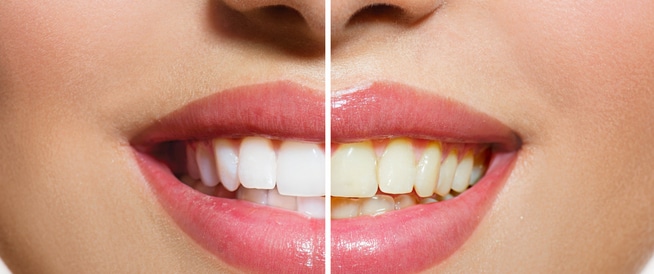
Teeth Whitening is a common procedure that aims to increase the whiteness of discolored teeth. Bleaching products are chemicals such as hydrogen peroxide or carbamide peroxide. The bleach penetrates the upper enamel layer of the tooth and the dentin, the main part of the tooth that is slightly softer than the enamel. The bleach reacts with the colored molecules that cause the discoloration. The dentin then becomes lighter and the teeth appear whiter. Teeth whitening can be done in a variety of ways, either in the clinic or at home, as these procedures provide lightening of up to 10 shades. It is essential to do this under the supervision of experts to ensure the best results and the safety of the procedure.
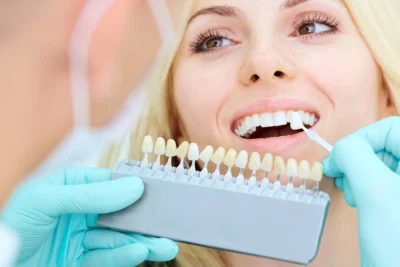
Teeth Whitening Results:
Results of Teeth Whitening vary before and after from one person to another depending on the health and color of the teeth, healthy teeth free of cavities and with a strong structure respond well to the whitening process and give quick and good results. As for weak teeth, their response may not be quick enough, but with repeated sessions, the desired results can be achieved.
Whitening can provide immediate results, achieving up to 8 shades whiter than the original color. When it comes to whitening techniques, laser technology shows faster results than chemical whitening; the desired result can be achieved in just two sessions, while chemical whitening may require several sessions. It is important to note that the results of teeth whitening are not permanent.
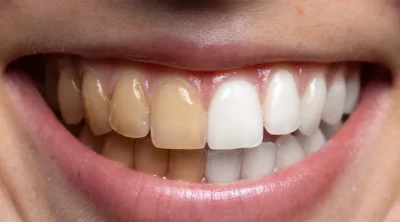
Types of Teeth Whitening:
There are several popular and effective methods for teeth whitening, each offering different benefits to suit the needs of different patients. Below is an explanation of the most common methods:
- Teeth whitening gel: This method begins with the dentist taking an impression of the patient's teeth to create an accurate mouth mold. This mold is used with a whitening gel, which usually contains hydrogen peroxide, an effective bleach. After the mold is prepared, the patient can use it at home on a regular basis, where the gel is placed in the mold and applied to the teeth for a period of two to four weeks, according to the instructions specified by the dentist.
- Laser teeth whitening: This type of whitening is more powerful and effective. The dentist applies the whitening product directly to the teeth, then uses a laser light to activate the whitening ingredients in the product. It usually takes about an hour in the dentist’s office, and provides immediate, noticeable results.
Both methods offer excellent solutions for those looking to significantly improve the appearance of their smile. It is important to discuss your options with your dentist to determine which method is best for your dental condition and desired results.
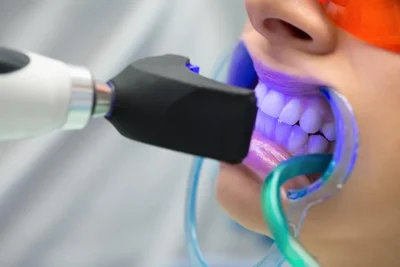
When Is Teeth Whitening Necessary?
Teeth color changes due to several factors that negatively affect their whiteness and attractiveness. The most prominent of these factors is the consumption of colored drinks such as coffee and tea, in addition to smoking, which is one of the main factors in yellowing teeth.
Also, acidic foods and drinks contribute to the erosion of tooth enamel, making it more susceptible to staining. Also, eating a lot of sweets can lead to tooth discoloration.
Before starting the teeth whitening process, it is necessary to consult a dentist to assess the condition of your teeth and find out if they are suitable for this process. People who have sensitive teeth, suffer from gingivitis, or have exposed dentin are advised to avoid whitening. It is also not recommended for pregnant or breastfeeding women or those under the age of 16.
If you're wondering about teeth whitening at home, read our article. Is Teeth Whitening at Home Safe? Best DIY Teeth Whitening Methods

Helpful Tips for Teeth Sensitivity After Whitening:
If you experience tooth sensitivity after whitening, there are several tips you can follow to relieve pain and improve comfort:
- Avoid foods and drinks that cause pain: , such as very cold or very hot drinks, and sweets.
- Gargling with warm water: Using warm water to gargle can help soothe sensitive teeth.
- Use a high fluoride toothpaste: To help strengthen enamel and reduce sensitivity, it is recommended to leave the paste on the teeth for several minutes before rinsing.
- Brushing teeth with a special toothpaste for sensitive teeth: To provide extra comfort, it also protects your teeth from further sensitivity.
- Temporarily stop bleaching: If sensitivity persists, it may be helpful to stop teeth whitening procedures for a period of time until the teeth recover.
- Reduce the duration of application of the bleaching agent: If you decide to continue bleaching, it is wise to minimize the amount of time the bleaching agent remains on your teeth to reduce the chances of worsening sensitivity.
Following these tips can help control tooth sensitivity after whitening and keep your mouth healthy.
If you're wondering how to get whiter teeth, also check out our article: Are Composite Veneers the Perfect Solution for Whiter Teeth?
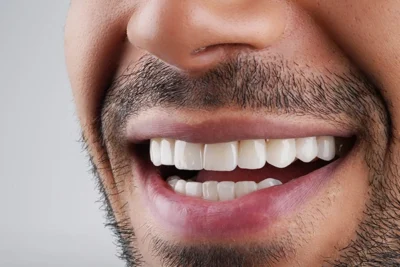
Finally:
Teeth whitening has become increasingly popular as an effective way to boost self-confidence with a whiter, brighter smile. With a variety of options available, from in-office sessions to take-home products, people can choose the method that best suits their lifestyle and individual needs. Additionally, it should be noted that the results are not permanent and require ongoing maintenance and proper care to maintain the results achieved. Therefore, teeth whitening is not only a way to improve aesthetics but also requires a commitment to a strict care regimen to ensure oral and dental health is maintained.
Please enter your data correctly
We will contact you as soon as possible.


